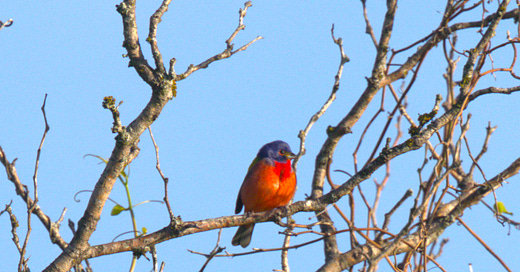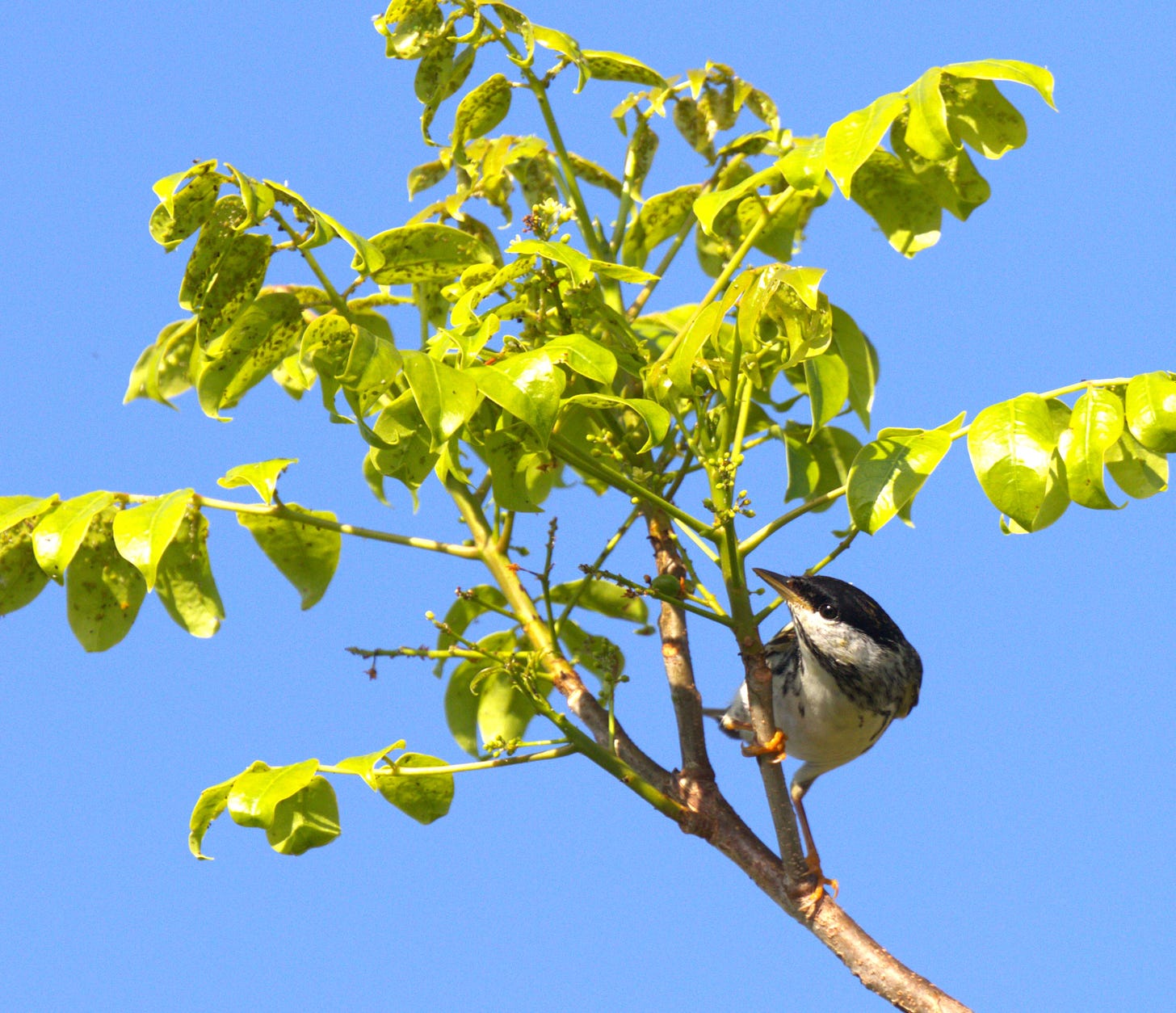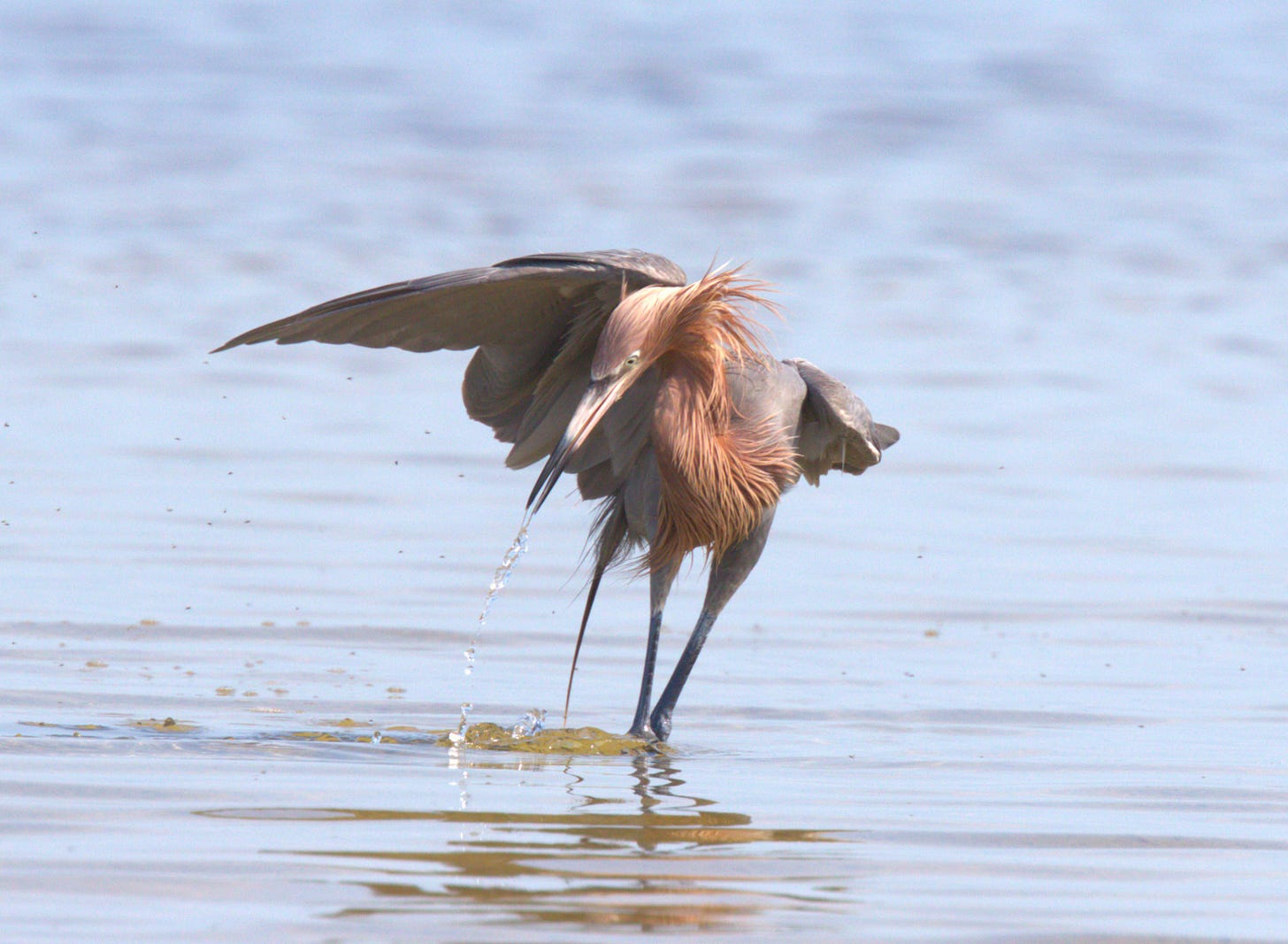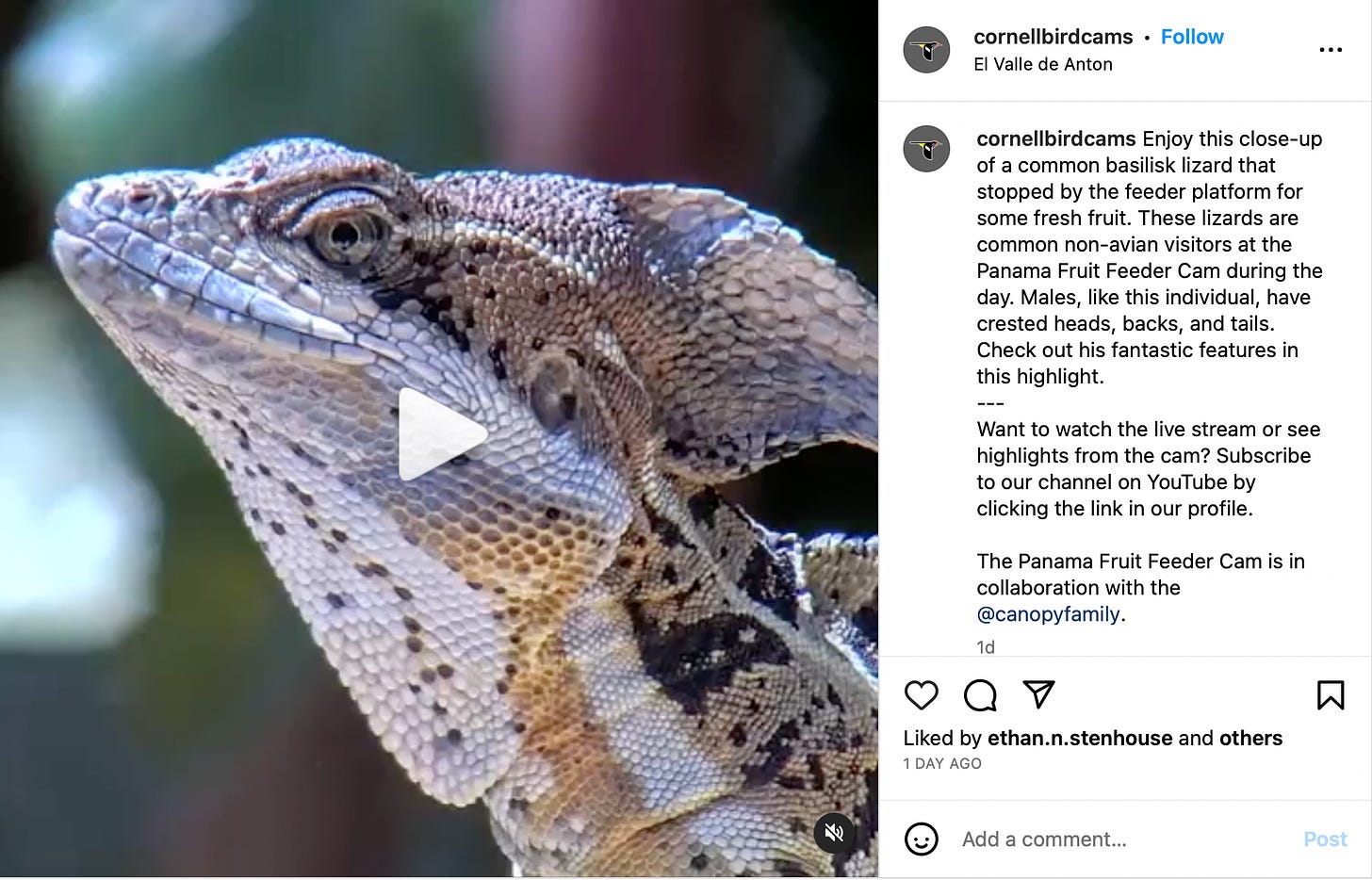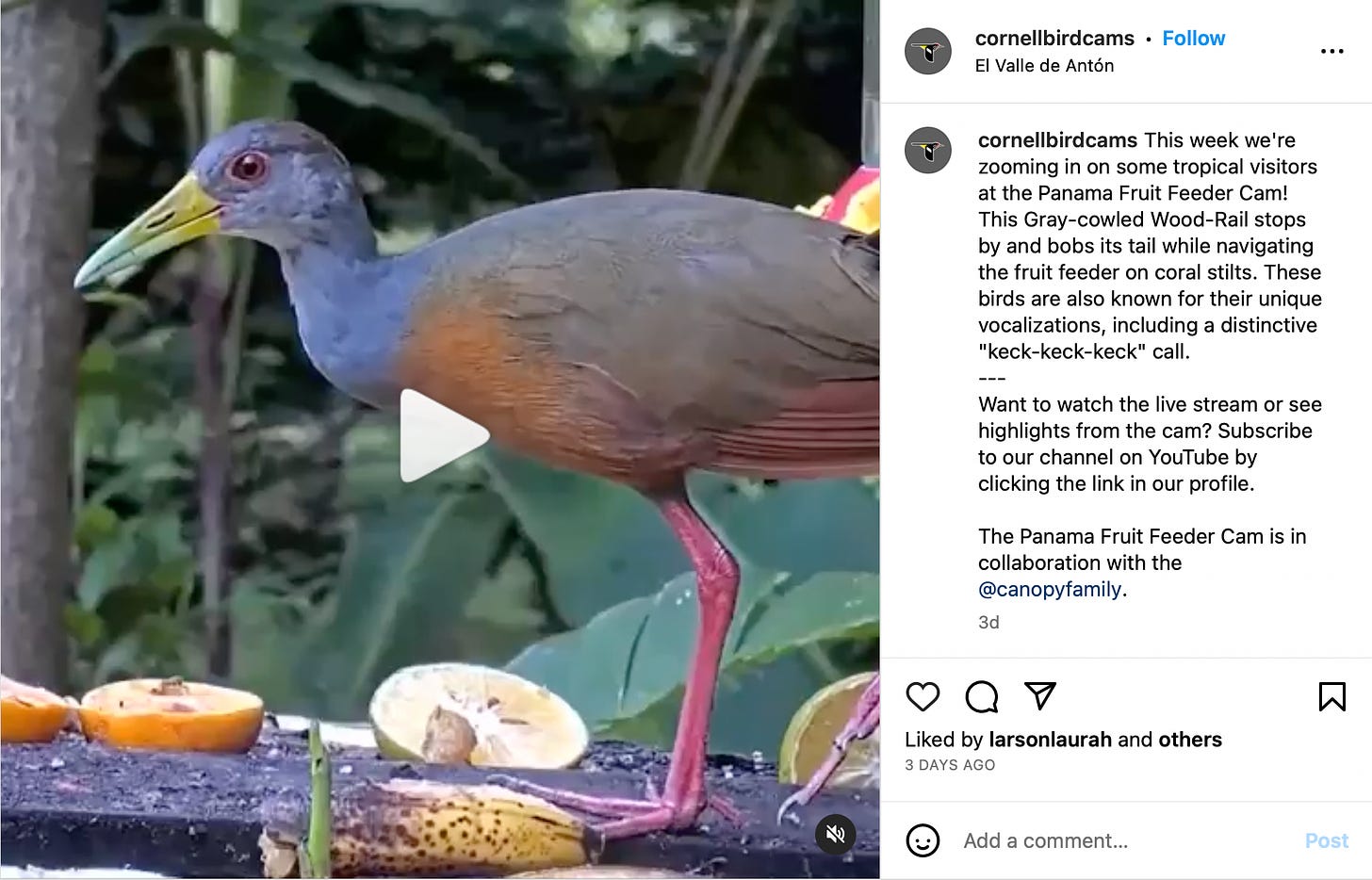1. Wanted! Someone to work on remote Gough Island for 13 months with only 6 co-workers and 8 million birds: If living alone in a bird-filled version of Jurassic Park sounds like your cup of Earl Grey — a British non-profit has a job for you. The Royal Society for the Protection of Birds (RSPB) is looking for applicants for a 13-month stay on remote Gough Island in the mid-South Atlantic. As one of a handful of field officers (and only people) living on the island, you should expect “frequent long days” tracking various seabird species in a “challenging sub-Antarctic environment,” according to the job post. (via Explorers Web)
2. There is sibling rivalry and then there is sibling rivalry Canada Jay-style: Many families have youngsters who squabble, but for Canada jays, the fighting is intense and eventually leads to exile for the weaker siblings, with the right to stay on home territory going to the victorious “family bully.” Now University of Guelph researchers in the College of Biological Science have calculated the costs of that early-life sibling rivalry – as well as the benefits to the dominant family bully. The findings appear in the Proceedings of the Royal Society B. (via University of Guelph)
3. A fun “photo diary” of wintering Bald Eagles in the Flint Hills of Kansas: It was so great to get to Seattle last weekend and meet area Kossacks! And the trip to Skagit was nothing short of amazing — so many cool birds up there. It was lucky that the gyrfalcon was being seen; I’d hoped for it but definitely wasn’t counting on it. Oh, wait. That didn’t happen. The plans fell apart, though I do still hope to get up there in the next few months. Since I didn’t get to meet the Seattle Choristers and see those cool Pacific Northwest birds with them, maybe we can share a few birds that I bet anyone who’s reading this in the lower 48 can see and pretend we’re all birding together. (via Daily Kos)
4. Migrating shorebirds, critical habitat in Guyana and Suriname and one dedicated bird expert – an interesting piece from CoastalReview.org: When bird expert Brian O’Shea travels for field work, he heads to northeast South America, taking a similar route as the long-distance migratory shorebirds he studies. O’Shea, who has been the ornithology collection manager for the North Carolina Museum of Natural Sciences since 2011, heads to Guyana or Suriname three or four times a year for various projects, including documenting major shorebird concentration points. He said there is a “massive effort” to study the diverse group of shorebirds that migrate between the Arctic and Guiana Shield, the region between the mouths of the Orinoco and Amazon rivers. (via Coastal Review)
5. A question on some peoples’ mind after an American Airlines bird strike: When an American Airlines plane struck a bird after taking off in Columbus, Ohio, and had to immediately return to the airport Sunday, it wasn’t the first collision between an aircraft and bird this year. In fact, more than 2,300 wildlife strikes have already been reported in 2023 — the vast majority of those animals being birds, according to a database maintained by the Federal Aviation Administration. How dangerous are bird strikes to planes? While 97 percent of the strikes involve birds, they can also include run-ins with bats or creatures on the ground like deer, coyotes, turtles or alligators. (via The Washington Post)
6. A “first ever” for Australia – the Siberian Ruby Throat: A Siberian Ruby Throat, a species never before seen in Australia, has been discovered on Christmas Island, baffling bird enthusiasts. Two brothers visiting Christmas Island photographed the striking bird, which typically resides in Russia. The bird, known for its iridescent ruby-coloured throat, has caught the attention of the local birdwatching community. BirdLife Australia’s Sean Dooley speculates that the bird may have been blown off course during migration due to a recent cyclone. (via 2GB Sydney)
7. A Mountain Plover Festival? In a (very) small town? Read on: Dozens of bird watchers will travel to a tiny Colorado town this month to spot a super rare bird. The Mountain Plover Festival is back from Friday, April 28, through Sunday, April 30. Karval, an eastern Colorado town of 35 people, invites adventurous and bird-loving individuals to the unique festival in one of North America’s largest breeding grounds of the elusive mountain plover. The mountain plover is a rare bird that makes its nesting grounds on the dryland farming ranches in this area of Colorado. The birds find the short grass prairie and fallow fields in the area to be excellent nesting grounds, where male and females each tend the nests. The bird begins arriving at Colorado’s eastern plains in early April. (via 9 News Colorado)
8. Yikes! – A “loon fallout” in Wisconsin: Migrating birds are crash landing in Wisconsin in what officials are calling a “loon fallout.” The Raptor Education Group, a nonprofit organization dedicated to the care and rehabilitation of wild birds, said loons have been seen on land and in small pondsthroughout the state. Loons are described as water birds that typically only go “ashore to mate and incubate eggs.” So what’s causing them to fall from the sky as they migrate north? The education group said the phenomenon called a loon fallout is the explanation. (via Miami Herald)
9. Kittiwake hotels - seriously: Constructed from galvanised steel and plywood, the latest hotel to open in Lowestoft, Suffolk, boasts a sea view and promises plenty of privacy. Which should suit the guests that flock to the prime seaside spot: black-legged kittiwakes looking for a place to nest. The kittiwake hotel opened in March, offering artificial nesting sites for the seabirds. Like albatrosses, kittiwakes spend most of their lives at sea, but traditionally nest on cliff ledges between March and July. Experts say that artificial nesting sites could support the kittiwakes as they face increasingly unpredictable weather because of climate change, limited prey due to the overfishing of sand eels in some areas, and the building of more offshore windfarms. (via The Guardian)
10. “Lights Out Texas” update: Every year, a third of all migrating birds make their way through the Lone Star State, and unfortunately, due to outdoor lighting, some won’t make it through the state successfully. That’s why during spring and fall bird migration periods, organizations like Audubon Texas urge Texans to dim or turn off outdoor lights. “Lights Out Texas” is a statewide campaign designed to protect our migrating birds every spring and fall as most migrating birds travel at night. The spring bird migration is underway now and will continue through June 15. Peak migration is April 22 through May 12. (via Texas Farm Bureau)
11. Reviewing the effectiveness of conservation interventions for Australian woodland birds: Australia's woodland birds include colorful parrots, flitting honeyeaters, bright blue fairywrens and the unassuming "little brown birds." Some, such as willie wagtails, laughing kookaburras and rosellas are found in urban gardens. There are other woodland birds you might never have noticed, such as pardalotes, thornbills, treecreepers, gerygones and nightjars. Forty woodland bird species are listed as threatened and several others are declining. And just this month another six woodland birds were added to the national threatened list. Efforts to help these species recover are being made. (via Physical Org)
12. Every million dollars helps (hopefully): The Department of the Interior today announced that more than $146 million in funding has been approved by the Migratory Bird Conservation Commission, providing the U.S. Fish and Wildlife Service and its partners the ability to help conserve or restore 242,000 acres of wetland and associated upland habitats for waterfowl, shorebirds and other birds across North America – including Canada and Mexico. The Commission approved more than $50.9 million in North American Wetlands Conservation Act (NAWCA) grants that will be matched by more than $73.4 million in partner funds. In addition, the Commission approved more than $21.7 million from the Migratory Bird Conservation Fund to conserve land on five national wildlife refuges across four states. The acquisitions will expand public opportunities for hunting, fishing, wildlife observation and outdoor recreational access. (via U.S. Fish & Wildlife Service)
13. USF&W on the arrival of Trumpeters: Although the first day of spring has technically passed, signs of spring are just beginning to peer their heads here at the Whittlesey Creek National Wildlife Refuge on the south shore of Lake Superior in Wisconsin. With snow still on the ground, it is hard not to feel like winter will never end. But a glimmer of hope has arrived, the first bird migrators, reminding us that spring is coming again, just as it did last year. Some travel thousands of miles, for several months, in search of food, mates and a safe place to raise their young. Many birds will just pass-through Whittlesey Creek on their way further north but, for one species this is their final destination- the Trumpeter Swan. (via U.S. Fish and Wildlife Service)
14. Six birds removed but seven added - Michigan updates its “at-risk birds” list: Michigan officials recently took six birds off of the states’ endangered and threatened species list. But it added seven other species. The last time the list was updated was in 2009. Among the species that newly receive threatened status are the Eastern whip-poor-will, evening grosbeak, golden-winged warbler, Northern goshawk, spruce grouse and upland sandpiper. Also added is the black tern that annually loses around 7.6% of its population, said Erin Ford, conservation manager at Audubon Great Lakes in Michigan. The group protects and improves bird habitat and advocates for the natural environment. (via Bridge Michigan)
15. Finally, what seven songs would you choose?: Eagles, doves, and all sorts of aves have been admired in song with artists connecting to the gracefulness and assorted symbolism linked to these creatures—from Bobby Day’s 1958 doo-wop hit “Rockin’ Robin,” and Bob Marley & The Wailers’ “Three Little Birds,” to The Police’s “Canary in a Coalmine,” different “Bluebird” songs by Sara Bareilles’ and the Electric Light Orchestra, and Linda Ronstadt’s “Skylark,” among many others. Though the list of songs referencing the feathered species is lengthy, here’s a chronological look at seven of the greatest songs about birds. (via American Songwriters)
Bird Photo of the Week
Photo by Hap Ellis, Reddish Egret - Fort De Soto Park, Pinellas County, FL.
Bird Videos of the Week
By Bird Galveston, “Birding in Galveston with Professional Birder Greg Miller”.
Cornell Live Bird Cam - Basilisk Lizard Visit.
Cornell Live Bird Cam - Gray-cowled Wood-Rail.

